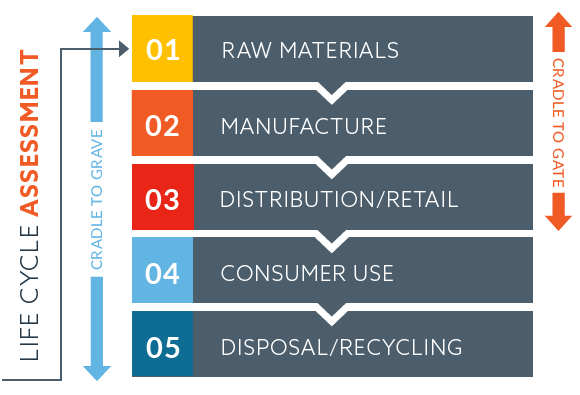
CLIMATE SOLUTIONS ADVISORY
Ostrom Climate has worked with numerous organizations to minimize their climate impacts and adapt to a changing climate. We identify practical and cost-effective climate solutions to support our clients in making the best decisions for their organizations and the planet.
CLIMATE CHANGE
Ostrom Climate helps individuals and organizations understand their climate impacts by creating inventories of their GHG emissions (also known as carbon footprints). Ostrom Climate’s reports are tailored to the specific needs of our clients and range from a brief one-page summary to a detailed report.
For more information, click here.
Ostrom Climate identifies opportunities to decrease emissions, prepares reduction plans, assists with goal setting, and tracks our clients’ progress over time.
We help our clients to:
- Learn about the tools and resources available to mitigate GHGs
- Move beyond the low-hanging fruit and pinpoint strategies that will produce substantial benefits
- Discover the best options available through cost-benefit analysis
- Define GHG targets, monitor emissions trends, and track achievements
Ostrom Climate helps organizations calculate and disclose their climate impacts. We specialize in numerous reporting frameworks and platforms and assist our clients with preparing accurate, concise, and focused reports that comply with regulatory requirements and maximize scoring on voluntary platforms.
Our services include tracking and reporting Key Performance Indicators (e.g., GHG emissions, fossil fuel combustion, and water consumption), complying and analyzing data, creating robust carbon management plans with reduction strategies and targets, and synthesizing informative and compelling reports that align with various criteria, regulations, standards and platforms such as:
- Alberta’s Technology Innovation and Emissions Reduction Regulation (TIER)
- BC’s Greenhouse Gas Industrial Reporting and Control Act (GGIRCA)
- Carbon Disclosure Project (CDP):
- The Greenhouse Gas Protocol from the World Resource Institute (WRI)
- Global Reporting Initiative (GRI)
- International Organization for Standardization (ISO) 14064, GHG series
- Specification for the Declaration of Carbon Neutrality
- Task Force on Climate-related Financial Disclosures (TCFD)
- United Nations Sustainable Development Goals (SDGs)
Once organizations have quantified their GHGs and made efforts to reduce them, they may choose to offset their emissions to become carbon neutral or climate positive. By investing in high-quality carbon offsets, our clients can:
- Take responsibility for their organizations’ GHGs
- Achieve emissions reduction targets in a cost-effective way
- Adhere to industry and marketplace best practices
- Differentiate their businesses from competitors
- Stay ahead of the regulatory curve
Ostrom Climate has developed numerous offset projects. Our offsets are completed to best-in-class standards, including The Gold Standard, Verra’s VCS, Climate Action Reserve, and British Columbia’s Emissions Offset Regulation. Each offset credit is validated and verified by qualified third-parties to be real, additional, permanent, and socially and/or environmentally beneficial.
To learn more about our climate designations, visit our Enage page.
Ostrom Climate has successfully assessed complex supply chains that span the globe and has been responsible for compiling and analyzing environmental data from raw material producers, manufacturers, shippers, retailers, and consumers. Once material inputs, processes, and activities in the supply chain have been delineated, we work with our clients to develop data-driven action plans to responsibly manage their supply chains, and improve their environmental performance.
Ostrom Climate also has extensive life cycle assessment expertise which can be used to assess the carbon footprint of a product.
In addition to climate change mitigation services, Ostrom Climate can identify the physical risks from climate change that our clients are exposed to in their operations and supply chains. Potential risk scenarios are outlined, based on climate models for the regions where our clients operate. We then work with clients to prepare climate change adaptation plans that enable organizations to prepare for and minimize impacts such as flooding, water, and energy scarcity, and health and safety risks to employees and local communities during extreme weather events.
Ostrom Climate supports our clients’ efforts to mitigate their impacts by developing climate metrics, creating best-practice manuals, and compiling case studies, which guide organizations on to paths that are scientifically sound and appropriate for their industries.
Ostrom Climate also evaluates how well our clients perform compared to sector averages, regulatory requirements, and internal goals, and works with them to develop industry-leading internal policies and programs that reduce risks, build opportunities, and drive profits.
For more information, visit our projects page.
For more information on our Offset Portfolios, visit our portfolio Portfolios page.
LIFE CYCLE ASSESSMENTS
Ostrom Climate has completed numerous life cycle assessments (LCAs) to quantify the impacts of our clients’ products throughout every life cycle stage and to pinpoint areas for environmental performance improvement. We use methodologies that are based on best practice standards and protocols.
Some of the benefits of conducting an LCA include:
- Differentiating a product from the competition by highlighting its environmental benefits using science-based metrics
- Identifying environmental protection and cost-saving opportunities within an organization and its supply chain
- Incorporating environmental liabilities into decision-making processes such as selecting capital investments that reduce environmental impacts
- Mitigating environmental, financial, and regulatory risks
Ostrom Climate’s LCA reports have frequently been used to obtain funding from governmental agencies and private investors for the development of promising new technologies, and have also been transformed into eye-catching marketing materials for product promotions.

WATER FOOTPRINTS
Ostrom Climate works with our clients to measure and minimize their water footprints, which we quantify through various lenses including corporate operations, supply chains, and the life cycle of products. Our studies are conducted following the industry-standard Water Footprint Assessment Manual and include the quantification of “green”, “blue”, and “grey” water consumption as defined in the manual.
SUSTAINABILTY PROGRAMS
Ostrom Climate helps our clients establish effective sustainability programs that embed environmental action into every facet of their organizations. We have worked with organizations to optimize the environmental performance of their product and service offerings, develop and launch offset-related campaigns, apply for eco-awards, engage with media on sustainability accomplishments, and create opportunities for effective customer, supply chain, and employee engagement.
Ostrom Climate’s Marketing and Client Engagement team specializes in helping organizations to showcase their sustainability achievements including GHG emissions reductions, and to build compelling narratives, educate consumers and employees, and encourage other industry players to act.
Click here for more information on our work with past clients and our current offerings.
For more information on our work with clients and our current offerings, please contact us.


